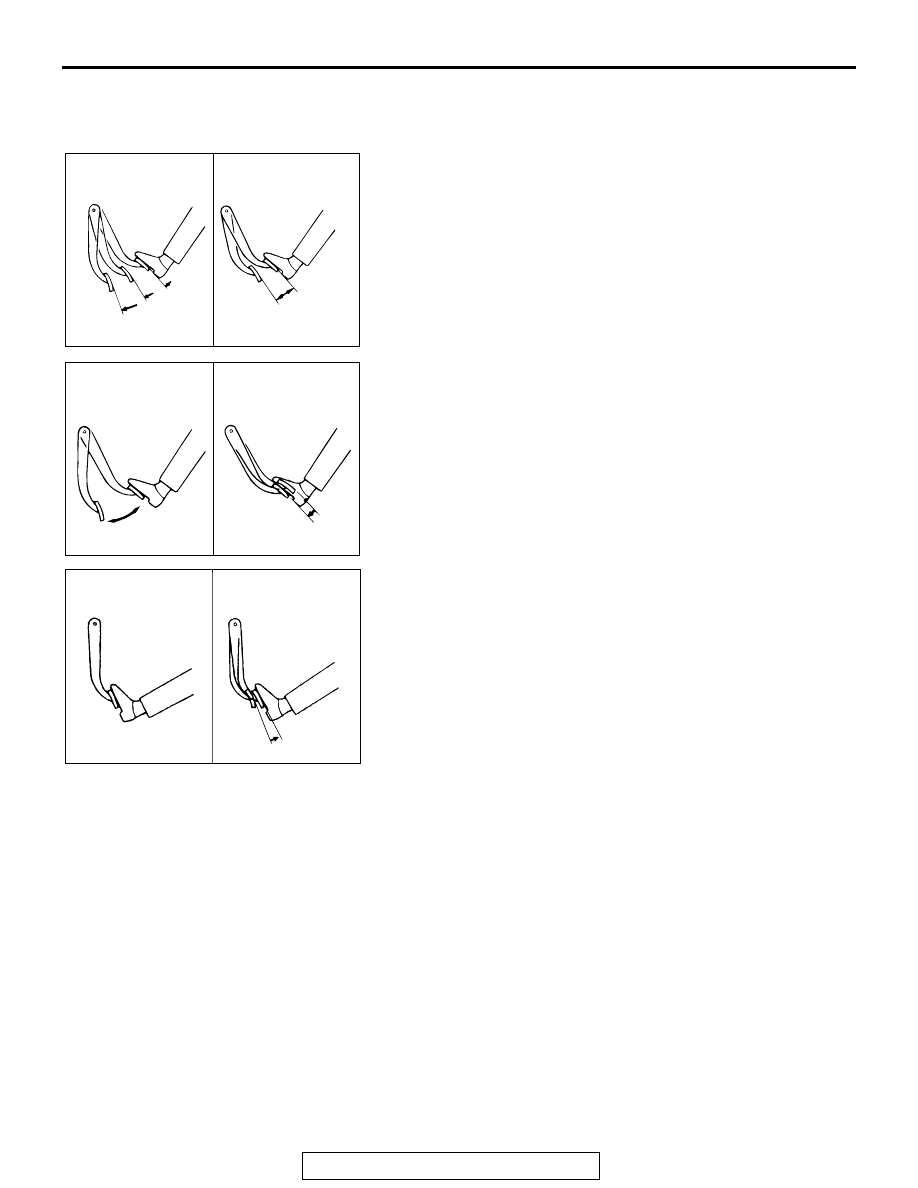Mitsubishi Montero Sport (2004+). Manual - part 773

ON-VEHICLE SERVICE
TSB Revision
BASIC BRAKE SYSTEM
35A-17
BRAKE BOOSTER OPERATING CHECK
M1351001000394
For simple checking of the brake booster operation, carry out
the following tests:
1. Run the engine for one or two minutes, and then stop it. If
the pedal depresses fully the first time but gradually
becomes higher when depressed succeeding times, the
booster is operating properly. If the pedal height remains
unchanged, the booster is defective. Go to step 2.
2. With the engine stopped, step on the brake pedal several
times. Then step on the brake pedal and start the engine.
If the pedal moves downward slightly, the booster is in good
condition.
If there is no change, the booster is defective. Go to step 3.
3. With the engine running, step on the brake pedal and then
stop the engine. Hold the pedal depressed for 30 seconds.
If the pedal height does not change, the booster is in good
condition, if the pedal rises, the booster is defective. If the
above three tests are okay, the booster is OK. If one of the
above three tests is not okay, the check valve, vacuum
hose, or booster will be defective.
Check the check valve (Refer to
.), vacuum hose
for leaks, high volume engine vacuum applied to booster.
Repair or replace as necessary. If OK, replace booster and
this step starting at Step 1.
AC004303 AB
GOOD
NO GOOD
AC004304 AB
WHEN ENGINE
IS STOPPED
WHEN ENGINE
IS STARTED
AC004305 AB
GOOD
NO GOOD